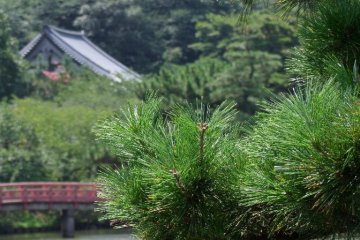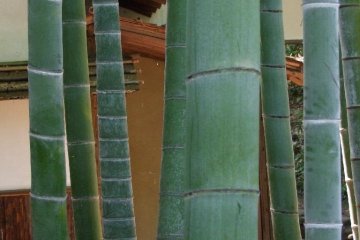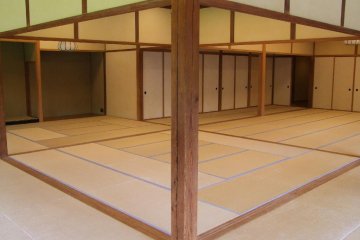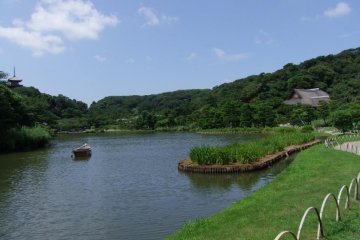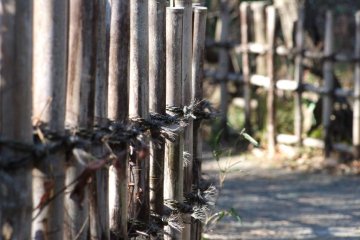Because it is a little bit off the beaten path, many visitors from overseas do not visit Sankei-en. But they should, and you should. It is a gorgeous park/garden, especially renowned for its seasonal beauty.
In late March or early April, the cherry blossoms (sakura) are in full bloom. And in July and August, there is a pond (the one on the right just inside the entrance) that is bursting with the beauty of thousands of Japanese lotus (hasu), also pink. Normally open at 9AM, come as early as 6AM during the lotus season, so that you can enjoy watching the buds "wake up" with the early morning light. In late autumn, you can enjoy the changing color of the leaves. In winter, plum blossoms (ume) start to bloom in mid to late February; nature’s way of telling the Japanese people that winter is almost over.

Sankei-En contains many old houses and buildings that are recognized as being culturally significant by the government. These buildings were brought to the park from locations all over the Japan, and include a three storied pagoda located high up on a hill deep inside the garden. This pagoda, originally constructed in Kyoto in the mid-1400s, was relocated to Sankei-en in 1914.

The entire garden was essentially the private home of Tomitaro “Sankei” Hara (1869-1939) an extremely wealthy silk merchant. It is quite large (175,000 square meters), and was opened to the public in 1906. Work on it started shortly after the beginning of the 20th Century and was finally finished in 1908. The park became a popular meeting point for artists during the late Meiji and early Showa periods. Bombings during World War II caused substantial damage to the buildings. In 1953, the garden was donated by the Hara family to the City of Yokohama. The city then created the Sankeien Hoshōkai Foundation, which continues to be responsible for its repair and maintenance.

As you stroll through the park, enjoy the Japanese style garden, bridges, streams, small waterfall, bamboo grove, and ponds, all of which will have you happily snapping away with your camera! The house that Hara and his family lived in (Kakushokaku) is huge; a sprawling, flat dwelling with dozens of spacious, interconnected tatami rooms, overlooking a private green lawn.
I am lucky enough to live within walking distance of the park and so visit it four or five times a year. It is a great place to bring special guests, who are always impressed by this very quiet, serene, setting of Japanese beauty.
When you are ready to leave, you might want to pamper yourself with a taxi ride back to NEGISHI or YAMATE stations. The fare should be around 1000 yen. The entrance fee is 500 yen for adults, 200 yen for elementary school students, and 300 yen for seniors over.









